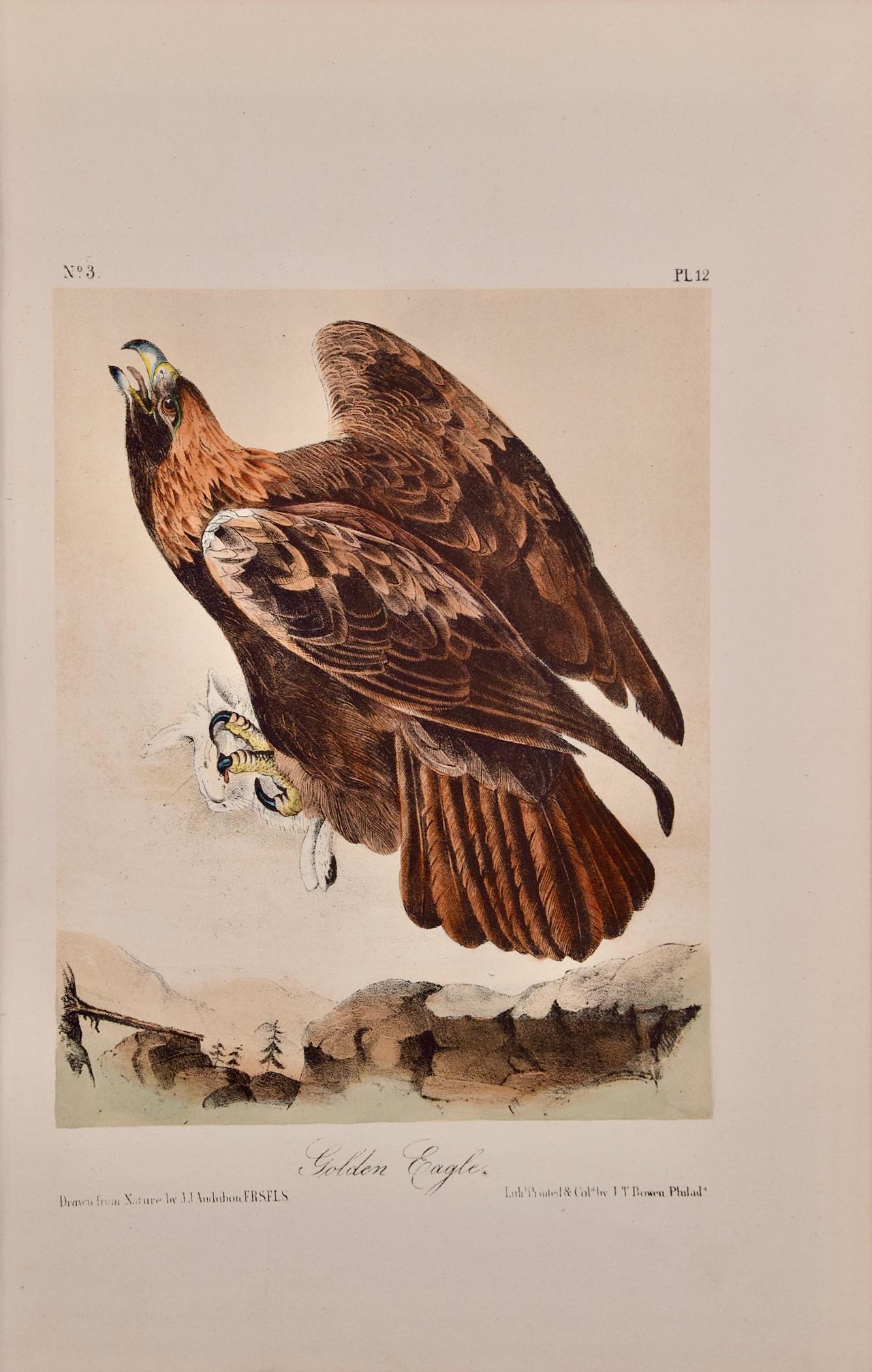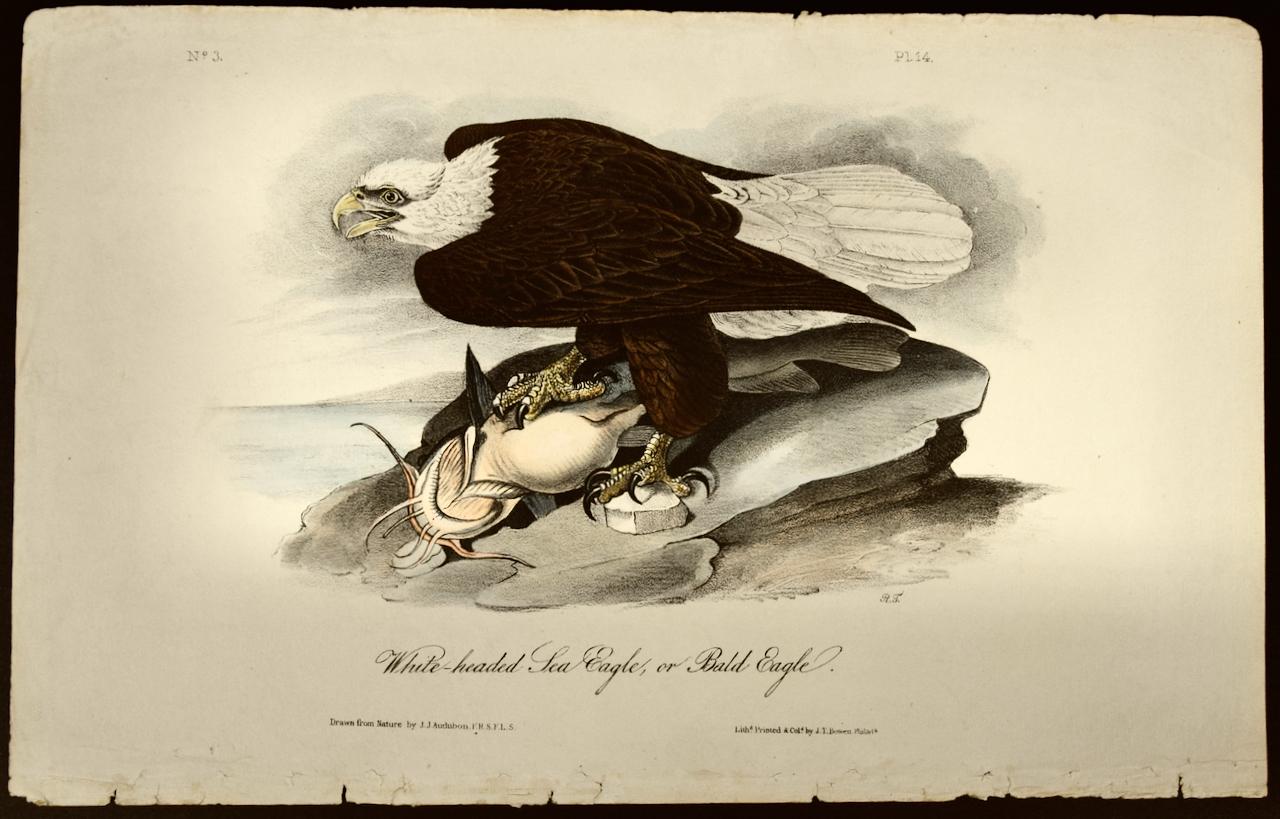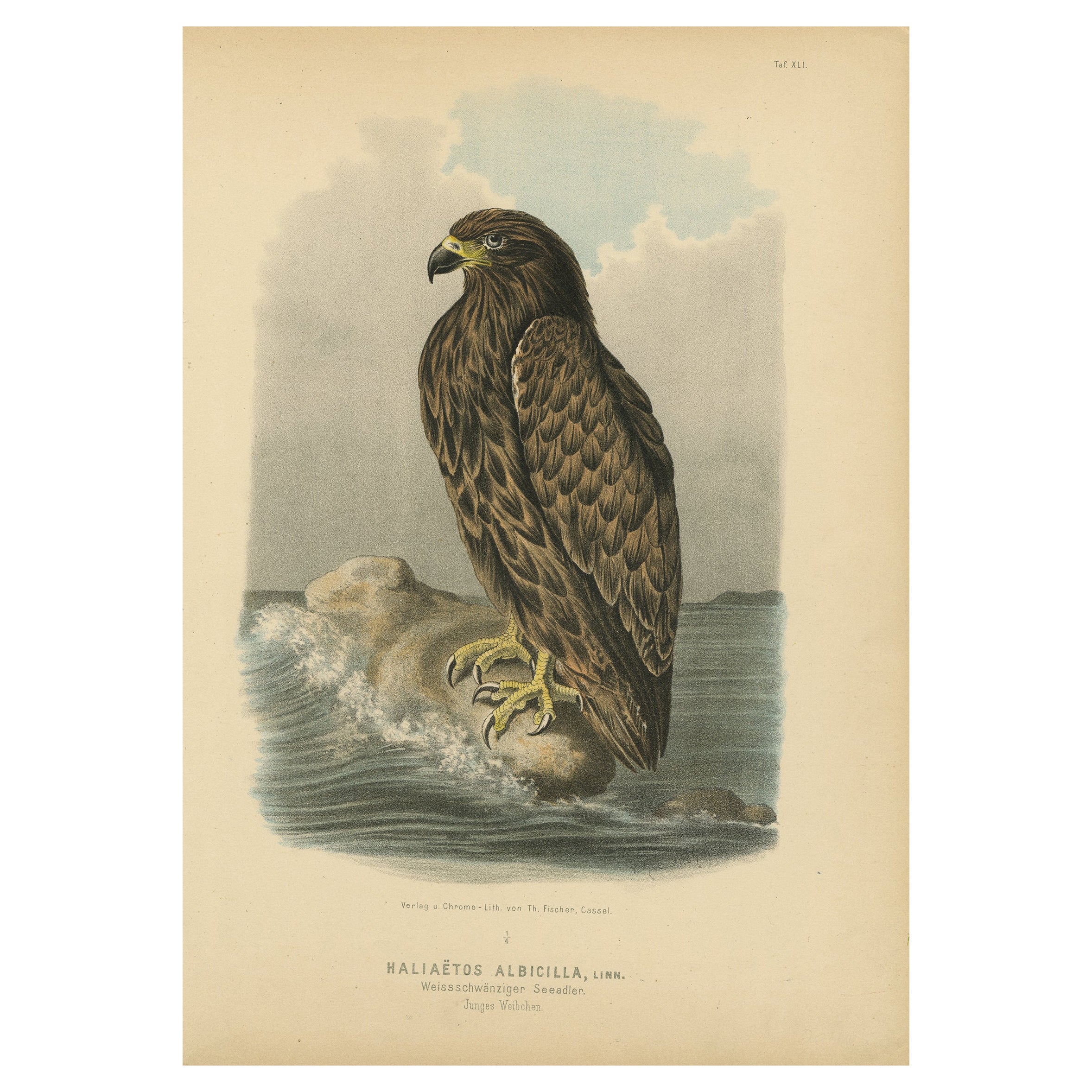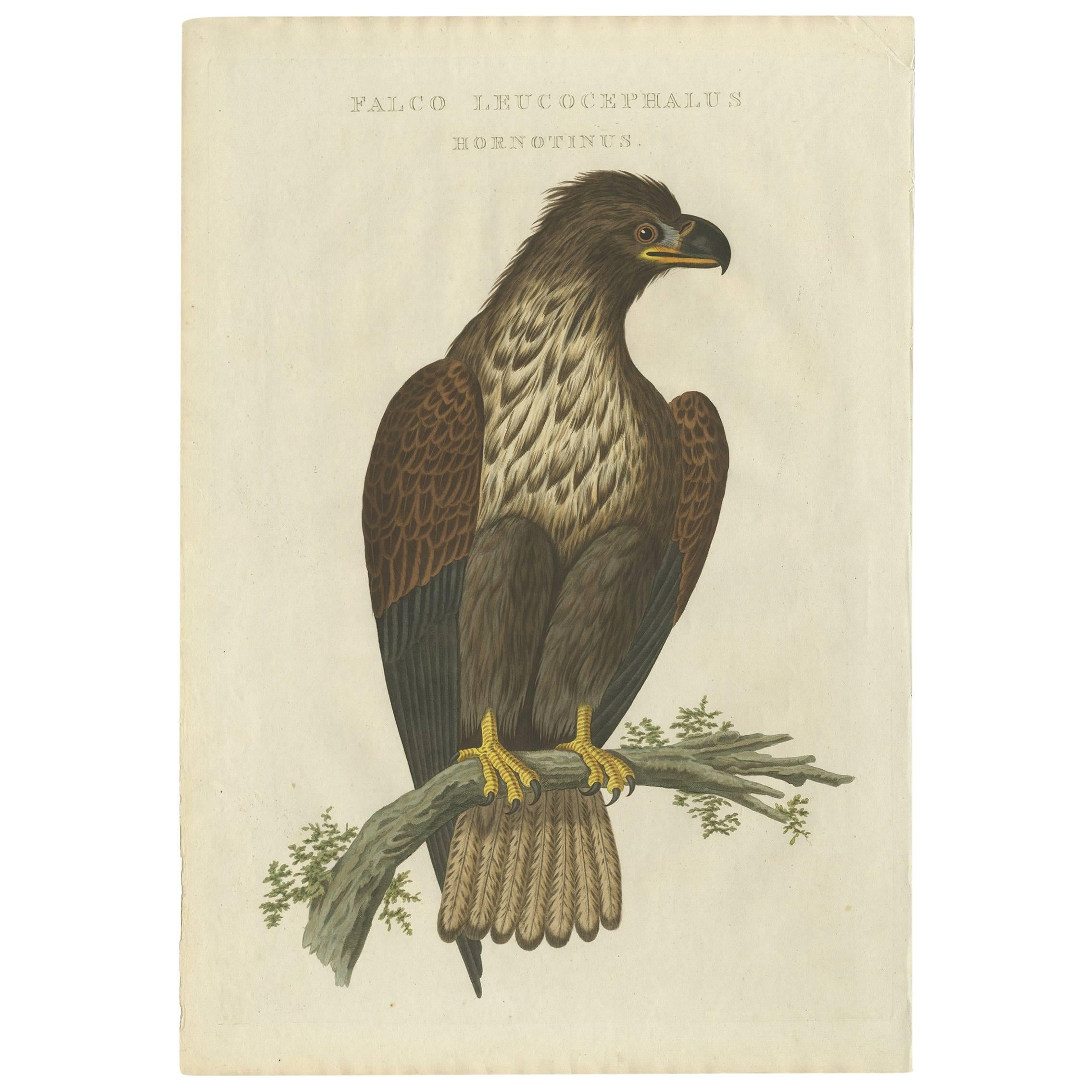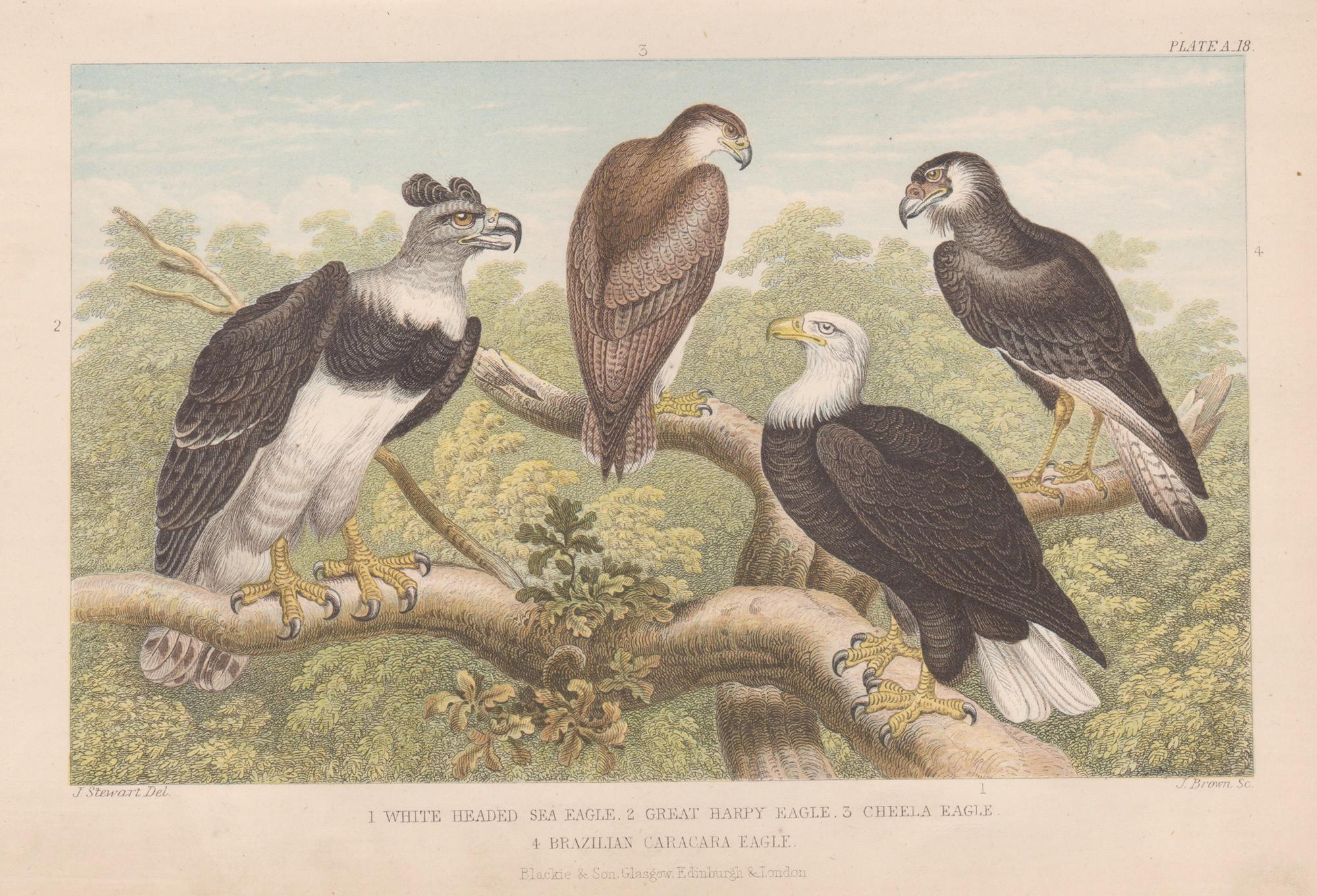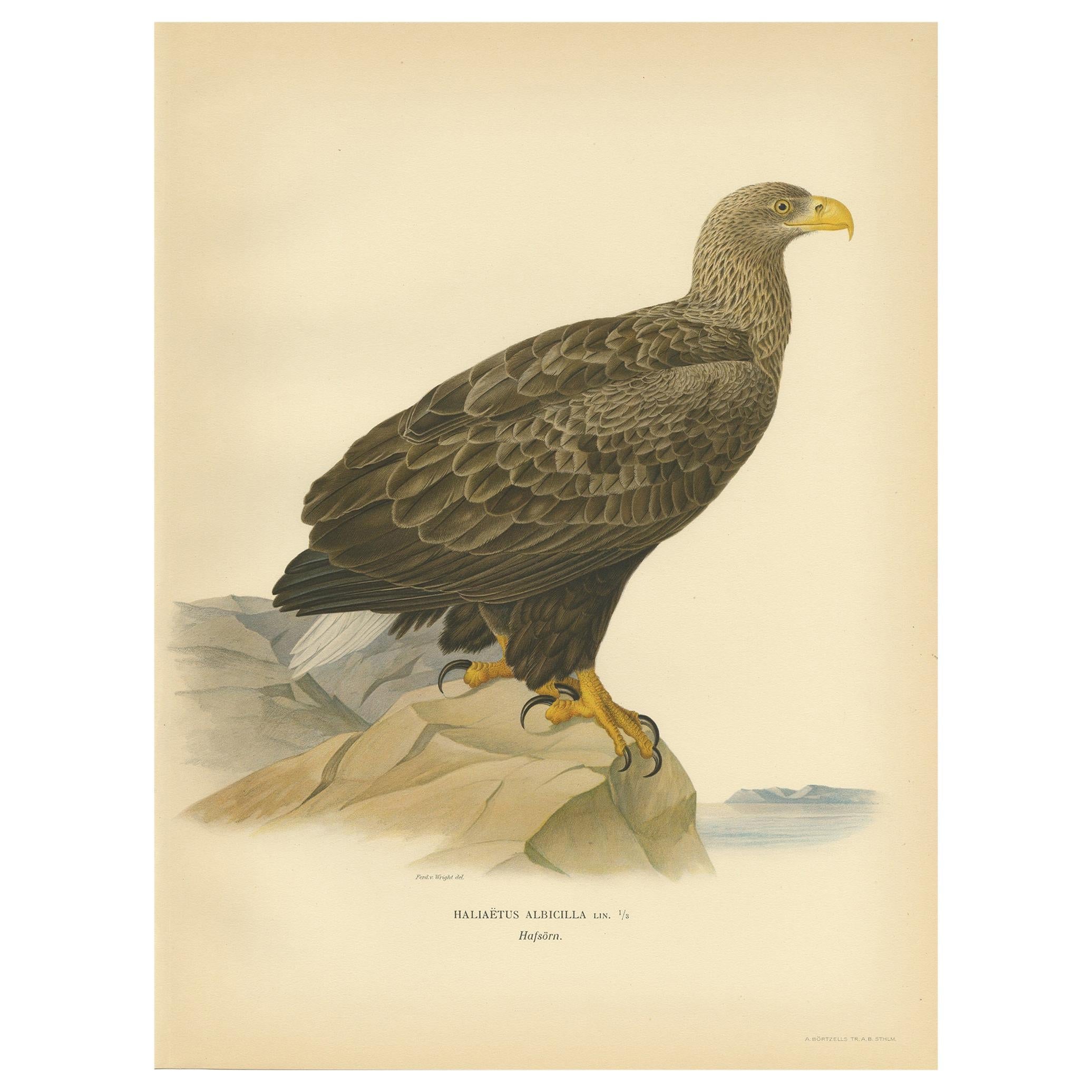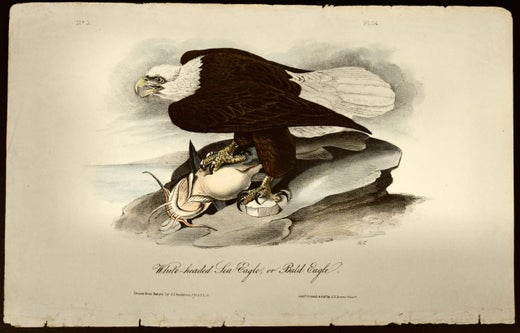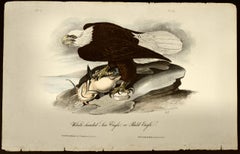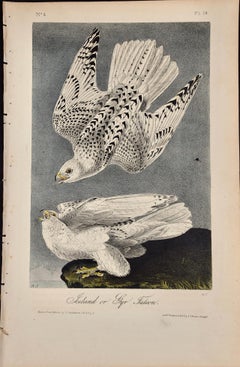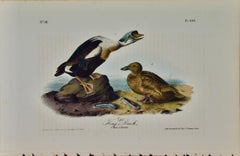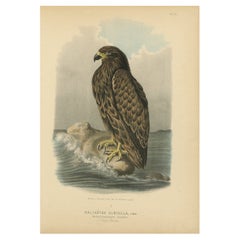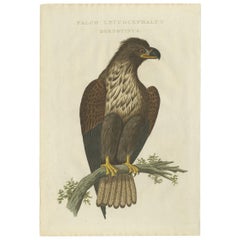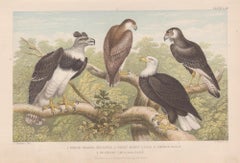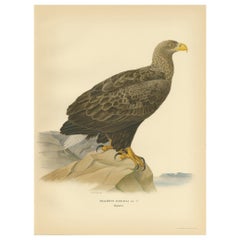This is an original John James Audubon hand-colored royal octavo lithograph entitled "Washington Sea Eagle", No. 3, Plate 13, from Audubon's "Birds of America". It was lithographed, printed and colored by J. T. Bowen and published in Philadelphia between 1856-1871. It depicts an adult male sea eagle perched on a rock.
This is an excerpt from Audubon's own description of this magnificent eagle, which includes how he came up with the name "Washington Sea Eagle":
"The name which I have chosen for this new species of Eagle, “The Bird of Washington,” may, by some, be considered as preposterous and unfit; but as it is indisputably the noblest bird of its genus that has yet been discovered in the United States, I trust I shall be allowed to honour it with the name of one yet nobler, who was the saviour of his country, and whose name will ever be dear, to it. To those who may be curious to know my reasons, I can only say, that, as the new world gave me birth and liberty, the great man who ensured its independence is next to my heart. He had a nobility of mind, and a generosity of soul, such as are seldom possessed. He was brave, so is the Eagle; like it, too, he was the terror of his foes; and his fame, extending from pole to pole, resembles the majestic soarings of the mightiest of the feathered tribe. If America has reason to be proud of her Washington, so has she to be proud of her great Eagle.
In the month of January following, I saw a pair of these Eagles flying over the Falls of the Ohio, one in pursuit of the other. The next day I saw them again. The female had relaxed her severity, had laid aside her coyness, and to a favourite tree they continually resorted. I pursued them unsuccessfully for several days, when they forsook the place.
The flight of this bird is very different from that of the White-headed Eagle. The former encircles a greater space, whilst sailing keeps nearer to the land and the surface of the water, and when about to dive for fish falls in a spiral manner, as if with the intention of checking any retreating movement which its prey might attempt, darting upon it only when a few yards distant. The Fish Hawk often does the same. When rising with a fish, the Bird of Washington flies to a considerable distance, forming, in its line of course, a very acute angle with the surface line of the water. My last opportunity of seeing this bird was on the 15th of November, 1821, a few miles above the mouth of the Ohio, when two passed over our boat, moving down the river with a gentle motion. In a letter from a kind relative, Mr. W. BAKEWELL, dated, “Falls of the Ohio, July 1819,” and containing particulars relative to the Swallow-tailed Hawk (Falco furcatus), that gentleman says:– “Yesterday, for the first time, I had an opportunity of viewing one of those magnificent birds which you call the Sea-Eagle, as it passed low over me, whilst fishing. I shall be really glad when I can again have the pleasure of seeing your drawing of it.”
Adult Male.Tarsus and toes uniformly scutellate in their whole length. Bill bluish-black, cere yellowish-brown, feet orange-yellow, claws bluish-black. Upper part of the head, hind neck, back, scapulars, rump, tail-coverts, and posterior tibial feathers blackish-brown, glossed with a coppery tint; throat, fore neck, breast, and belly light brownish-yellow, each feather, with a central blackish-brown streak; wing-coverts light greyish-brown, those next the body becoming darker; primary quills dark brown, deeper on their inner webs; secondaries lighter, and on their outer webs of nearly the same light tint as their coverts; tail uniform dark brown.
Length 3 feet 7 inches; extent of wings 10 feet 2 inches; bill 3 1/4 inches along the back; along the gap, which commences directly under the eye, to the tip of the lower mandible 3 1/3, and 1 3/4 deep. Length of wing when folded 32 inches; length of tail 15 inches; tarsus 4 1/2, middle 4 3/4, hind claw 2 1/2.”
There are a few tiny spots, two faint thin linear areas of discoloration in the lower margin and mild irregularity of the left edge of the sheet, where it was bound in Audubon's publication. This original hand-colored Audubon lithograph is otherwise in very good condition. The sheet measures 10.5" high by 6.75" wide. The original descriptive text pages, 53-56 from Audubon's book are included.
John James Audubon (1785-1851) was a naturalist and artist. He was initially unsuccessful financially prior to the publication of his famous work “The Birds of America”, spending time in debtor’s prison, once stabbing a disgruntled investor in self-defense. However, his obsession with birds and art motivated him to persist in his goal of documenting every bird in America via his watercolor paintings and publishing his works for all to enjoy. Audubon's first illustrations were published in a large elephant folio size. Due to their expense they were purchased in rather small numbers by the wealthy. To reach a larger audience, Audubon, with the help of his sons and J. T. Bowen, published a smaller octavo sized lithograph version, which were much more affordable.
With the success of his bird projects, Audubon then turned his attention to four-legged animals. He explored the Missouri River in 1843 sketching the four-legged animals he encountered in their natural setting. His expedition covered some of the same regions recently explored by Lewis and Clark, traveling from present day Alaska to Mexico. Audubon realized that this was an opportunity to document these animals in the still relatively pristine American wilderness, before man encroached on their environment.
Between 1845 and 1848, Audubon and his sons John Woodhouse Audubon and Victor Gifford Audubon produced a set of elephant folio sized lithographs that were primarily engraved and hand colored by J. T. Bowen in Philadelphia. The publication, which included text descriptions of the animals was published 3 years before Audubon died. As with the birds, this was followed by a three-volume set of 155 octavo-sized plates entitled “The Quadrupeds of North America” completed and published by Audubon’s sons, John, Jr. and Victor.
Audubon prints continue to be popular and a wise investment. The double elephant folio set “The Birds of America” have sold at auction for as much as $8.8 million, and individual plates may sell for six figures. The beautiful octavo sized plates are not as expensive, but becoming more sought after, as the folio bird plates become unattainable to all but the very wealthy.
